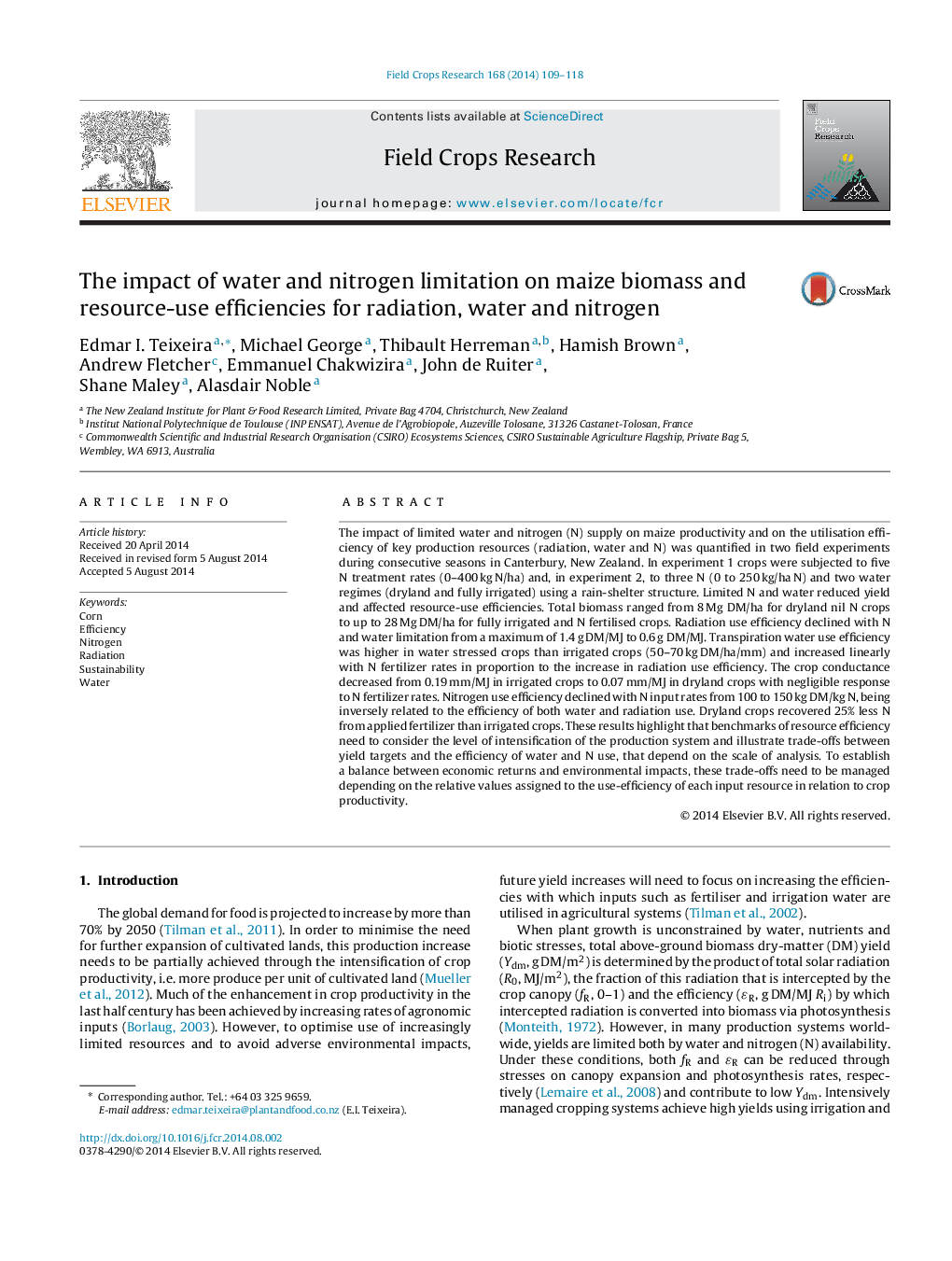| کد مقاله | کد نشریه | سال انتشار | مقاله انگلیسی | نسخه تمام متن |
|---|---|---|---|---|
| 4509975 | 1624695 | 2014 | 10 صفحه PDF | دانلود رایگان |
• This study illustrates trade-offs between yields and resource-use efficiencies.
• Water and N supply treatments produced maize biomass yields from 8 to 28 Mg/ha.
• Efficiencies of radiation (ɛR), water (ɛW) and N (ɛN) use responded to water and N.
• N limitation reduced ɛW through a proportional decline in ɛR but increased ɛN.
• Water stress reduced yields and crop conductance but increased ɛW.
The impact of limited water and nitrogen (N) supply on maize productivity and on the utilisation efficiency of key production resources (radiation, water and N) was quantified in two field experiments during consecutive seasons in Canterbury, New Zealand. In experiment 1 crops were subjected to five N treatment rates (0–400 kg N/ha) and, in experiment 2, to three N (0 to 250 kg/ha N) and two water regimes (dryland and fully irrigated) using a rain-shelter structure. Limited N and water reduced yield and affected resource-use efficiencies. Total biomass ranged from 8 Mg DM/ha for dryland nil N crops to up to 28 Mg DM/ha for fully irrigated and N fertilised crops. Radiation use efficiency declined with N and water limitation from a maximum of 1.4 g DM/MJ to 0.6 g DM/MJ. Transpiration water use efficiency was higher in water stressed crops than irrigated crops (50–70 kg DM/ha/mm) and increased linearly with N fertilizer rates in proportion to the increase in radiation use efficiency. The crop conductance decreased from 0.19 mm/MJ in irrigated crops to 0.07 mm/MJ in dryland crops with negligible response to N fertilizer rates. Nitrogen use efficiency declined with N input rates from 100 to 150 kg DM/kg N, being inversely related to the efficiency of both water and radiation use. Dryland crops recovered 25% less N from applied fertilizer than irrigated crops. These results highlight that benchmarks of resource efficiency need to consider the level of intensification of the production system and illustrate trade-offs between yield targets and the efficiency of water and N use, that depend on the scale of analysis. To establish a balance between economic returns and environmental impacts, these trade-offs need to be managed depending on the relative values assigned to the use-efficiency of each input resource in relation to crop productivity.
Journal: Field Crops Research - Volume 168, November 2014, Pages 109–118
